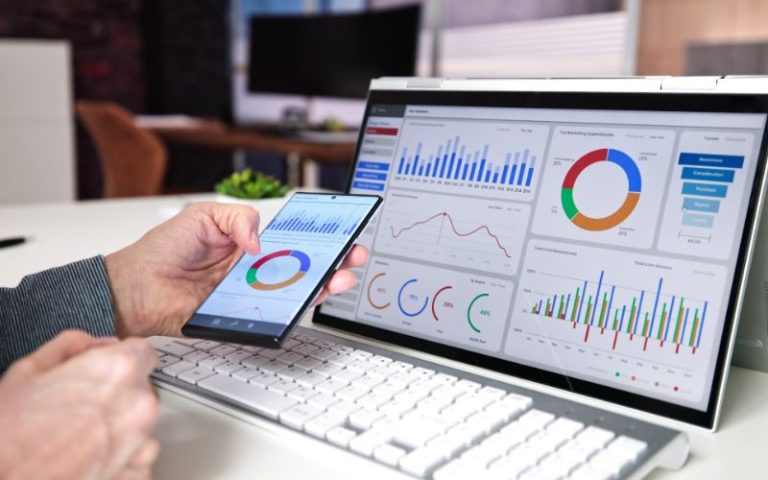As a small business owner, you probably employ either a bookkeeper, accountant, or fractional CFO to keep track of your business’s financials. The financial statements these financial professionals generate give you insights into the performance of your business in the recent past. While this is essential to understand, it’s equally important to take these insights and use them along with financial and non-financial drivers to generate a business forecast. A business forecast (also known as a cash flow forecast and financial forecasting) will help you see the future of your business for the next month, quarter, or even the next year, so that you might know what to expect.
But how exactly does a business forecast give you insights into your business’s future? We’ll cover what a cash flow forecast is, how it can help you plan your business’s future, how a forecast helps you accelerate business growth, and the two types of forecasts in the coming sections.
What Is Business Forecasting?
Let’s start by defining cash flow. Cash flow is the inflow and outflow of money from your business. Cash flow forecasting, on the other hand, helps you determine your current and projected cash positions based on these inflows and outflows.
We use financial forecasting to analyze what our client’s cash positions will look like in the future. We focus on determining when cash will be at a high point and when it will be at a low point. Getting this information in the hands of our clients helps them make more educated business decisions. It also helps them scenario plan, a practice of manipulating their forecast based on certain circumstances to see how a specific scenario will play out. For example, if an economic crisis may be predicted on the horizon, we will use a forecast to determine worst and best-case scenarios. In an economic decline, our clients might lose their largest customer or some of their customers may need to reduce their services to fit tighter budgets. We can use these potential outcomes and “run them” through the forecast to see how they would affect the business’s cash flow. On the reverse, we can also use forecasts to scenario plan for business opportunities such as large clients that are coming to a business. Then, our clients can get an idea of whether they might be able to make new hires, purchase new equipment, obtain a new lease, etc. to meet customer demands. These scenario plans can help business owners make sounder decisions rather than going based on “gut”.
Below we will dive a bit deeper into the two types of forecasts.
What Is Short-Term Forecasting?
Short-term forecasting involves creating a rolling cash flow projection for a period of 13 weeks (13 weeks being a quarter), based on current expenses and business income. This type of cash flow forecast provides a detailed view of your present and upcoming cash position, helping you assess immediate financial needs, such as ensuring you have enough funds to pay employees without resorting to a loan or line of credit. For example, one reason you might be low on funds to pay employees is due to a client or two not paying their invoices. Your forecast will notify you of this and allow you to make a plan to get these funds in time, so you hopefully won’t need to use a cash reserve or line of credit to cut paychecks. To stay ahead of potential cash shortages, it’s recommended to review this forecast weekly, allowing you to make necessary adjustments before low funds cause problems.
Another business strategy to improve cash flow is to reduce your accounts receivable (AR) days. For example, if your current billing agreement allows clients to pay their invoices within 60 days, you could adjust the terms to require payment within 15 or 30 days instead. This would help ensure more consistent cash flow for covering expenses. Also, if you don’t already have a formal agreement specifying when clients should pay their invoices, it’s highly beneficial to implement one. It offers clarity for clients and makes it easier to enforce timely payments.
The graphic below shows the impact one company experienced by reducing their AR days. This serves as an example of the potential results you could have by converting to a 15-day churn. You can see that a 60-day turn causes this example business to be negative $30,000 in March while if they had a 15-day turn, they would have been at a positive $170,000 in March.

What Is Long-term Forecasting?
A long-term cash flow forecast is a rolling projection spanning 1 to 5 years, providing insight into your future cash position. This forecast reflects your long-term cash flow based on the level of risk you’re comfortable taking, such as investing in new equipment, expanding your workforce, or launching new product lines. It’s important to review this forecast monthly or whenever you’re planning a significant business change such as hiring a COO or buying a new building.
Setting up an accurate forecast can have a significant and immediate impact on your business. Cash is the lifeblood of a small business, and knowing where your cash is going gives you far more choices. If you’d like helping setting up a business forecast, reach out for a free virtual CFO consultation. We’d be happy to help.




